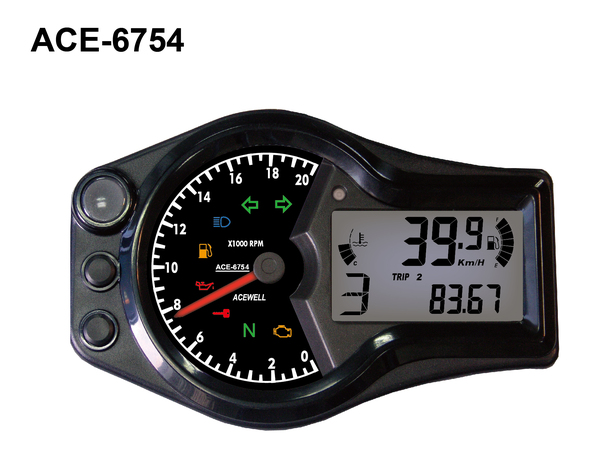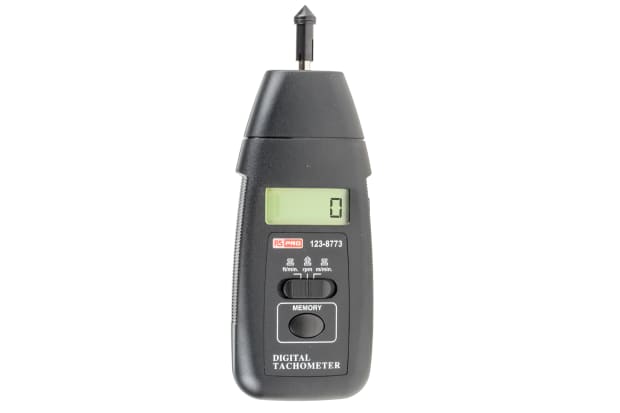Exactly How a Tachometer Aids Monitor Engine Health And Wellness and Efficiency
Exactly How a Tachometer Aids Monitor Engine Health And Wellness and Efficiency
Blog Article
Opening the Keys of Tachometers: Whatever You Required to Learn About This Important Tool in Your Lorry
Understanding the ins and outs of tachometers can provide important insights right into your automobile's performance and upkeep requirements. From measuring engine speed to analyzing the information it presents, tachometers function as a vital device for automobile proprietors and fanatics alike. By unwinding the mysteries behind this important instrument, you can open a wide range of information that can improve your driving experience and guarantee the longevity of your vehicle.
Relevance of Tachometers
The value of tachometers lies in their capacity to provide crucial real-time data concerning an engine's rotational speed, enabling specific surveillance and upkeep of machinery. By measuring the transformations per min (RPM) of an engine's crankshaft, tachometers provide useful insights right into the engine's efficiency - tachometer. This data is vital for making sure that the engine operates within its ideal range, preventing possible damages from over-revving or underperforming
Tachometers play an important role in assisting operators and professionals identify any kind of anomalies in the engine's rate, which might show concerns such as gas ineffectiveness, mechanical problems, or extreme pressure on the engine. By immediately determining these concerns with tachometer analyses, upkeep can be performed proactively, stopping pricey repair services and downtime in the future.
In addition, tachometers are especially critical in high-performance lorries and machinery, where accurate control over engine rate is required for ideal operation. Racing autos, aircraft, and commercial devices depend on tachometers to provide peak efficiency while keeping security requirements. In significance, tachometers are not simply tools for determining speed but essential devices for ensuring the smooth and effective procedure of engines throughout various applications.
Exactly How Tachometers Step Engine Rate
Using sensors that find the regularity of electric pulses generated by the engine's ignition system, tachometers precisely measure the rotational rate of an engine. By checking the price at which these pulses are gotten, tachometers give real-time responses on just how fast the engine's crankshaft is revolving per min, typically described as revolutions per minute (RPM)
The tachometer's sensor, often linked to the engine's ignition coil or ignition system cords, gets the electrical signals created each time a cyndrical tube fires. These signals are after that transformed into RPM readings displayed on the scale or tool cluster within the motorist's view. Tachometers can be analog or digital, with contemporary cars commonly including electronic screens for specific and instant RPM analyses.
This details is important for motorists to recognize the engine's performance, prevent over-revving, optimize equipment shifting, and guarantee reliable gas usage. By precisely gauging engine speed, tachometers play an essential role in assisting motorists run their vehicles safely and successfully.
Translating Tachometer Analyses
Having a clear understanding of how tachometers determine engine rate establishes the foundation for effectively analyzing the RPM readings showed. Analyzing tachometer readings is essential for optimum car performance and engine health and wellness. RPM (Transformations Per Min) analyses on the tachometer show the speed at which the engine's crankshaft is revolving. When the engine is idling, the tachometer needle commonly rests around 600-1000 RPM, depending on the vehicle. As you accelerate, the RPM will increase, Related Site showing the engine's higher rotational rate. When shifting gears in a hand-operated transmission automobile, the RPM will certainly drop as you engage the clutch and change equipments, then rise again as you increase in the new gear. Keeping an Learn More Here eye on the tachometer can assist you figure out the most efficient changing points to maximize fuel economic climate and engine power. In addition, unusual fluctuations or regularly high RPM readings can suggest prospective concerns with the engine that may call for expert interest. By taking note of the tachometer readings and understanding exactly how to translate them, you can guarantee your vehicle runs smoothly and effectively.


Tips for Making Use Of Tachometers Properly
To improve driving effectiveness and optimize engine efficiency, what trick strategies can be applied for properly using tachometers? Tachometers are vital tools that give real-time comments on engine rate, allowing vehicle drivers to make informed choices for far better efficiency - tachometer. Here are some ideas for using tachometers efficiently:
Recognizing Ideal RPM Range: Acquaint yourself with the ideal RPM (Revolutions Per Minute) range for your car. Keeping the engine within this variety can boost gas performance and extend the engine's life-span.
Changing Gears at the Right Time: Make use of the tachometer to establish the finest time to shift gears. Purpose to change equipments when the RPM gets to the ideal array for the following equipment.
Keeping Track Of Engine Stress And Anxiety: High RPMs for extended periods can strain the engine. Watch on the tachometer to stop over-revving, specifically throughout velocity or when lugging heavy lots.
Tachometers and Vehicle Maintenance
When considering vehicle maintenance, tachometers play a crucial role in checking engine efficiency and finding potential problems. Tachometers supply vital data on engine rate, permitting chauffeurs and auto mechanics to make sure that the engine is operating within the suggested RPM range. Frequently keeping track of the tachometer readings can assist identify troubles such as engine misfires, damaged ignition system, or concerns with the gas distribution system. By focusing on the tachometer, motorists can stop extreme stress on the engine, which can cause costly repair work down the line.
In addition to detecting prospective concerns, tachometers can likewise help in optimizing official website gas performance. By keeping the engine speed within the optimal array, chauffeurs can boost their gas mileage and lower gas usage. This not only benefits the driver's purse yet likewise adds to ecological preservation by lowering harmful exhausts.
Conclusion

Report this page